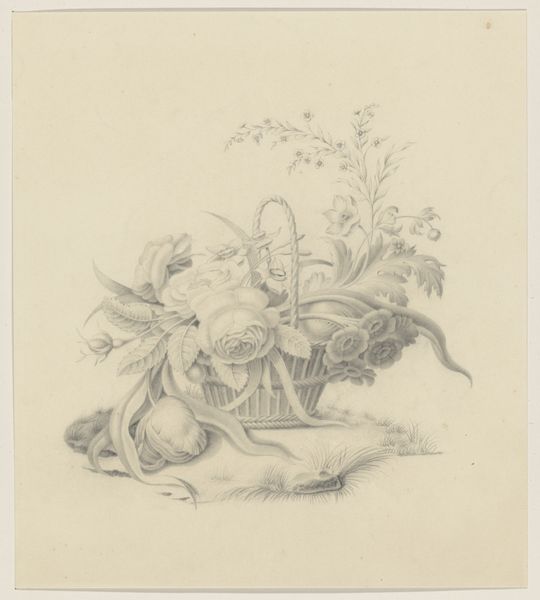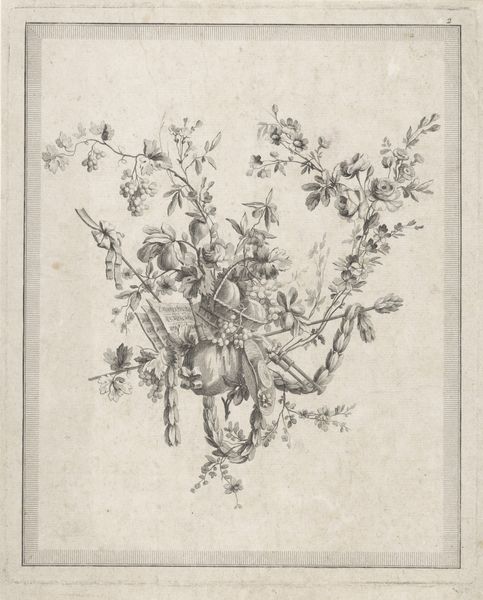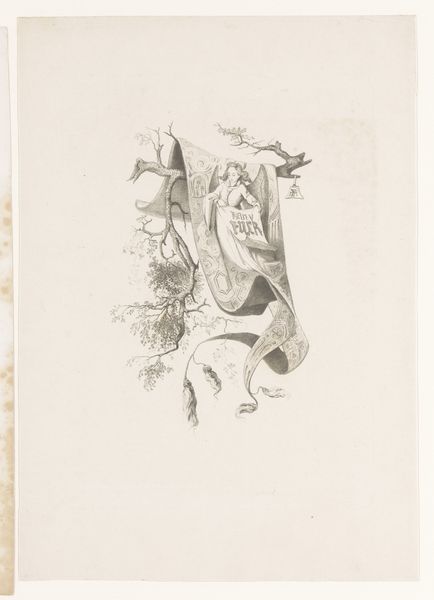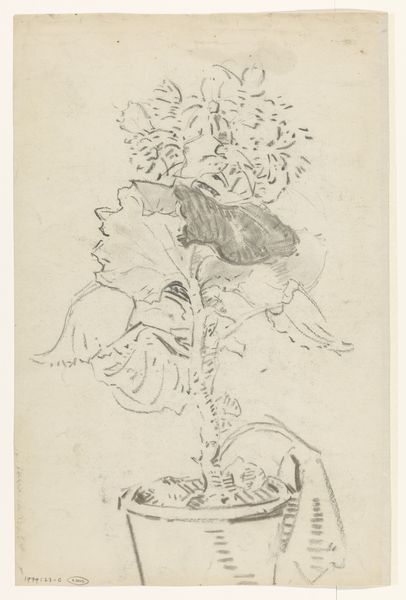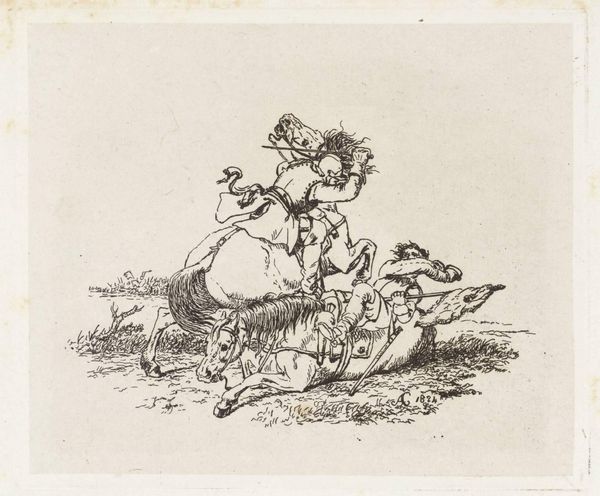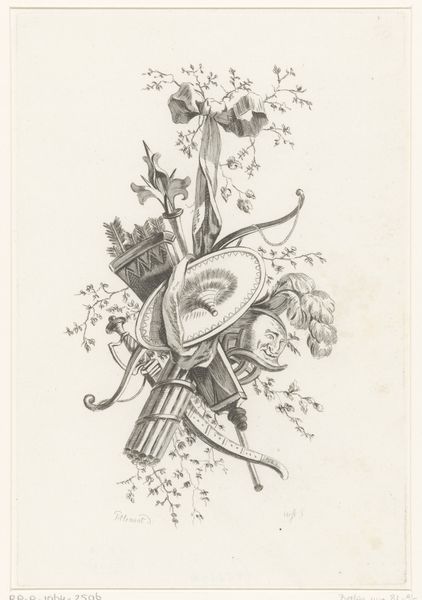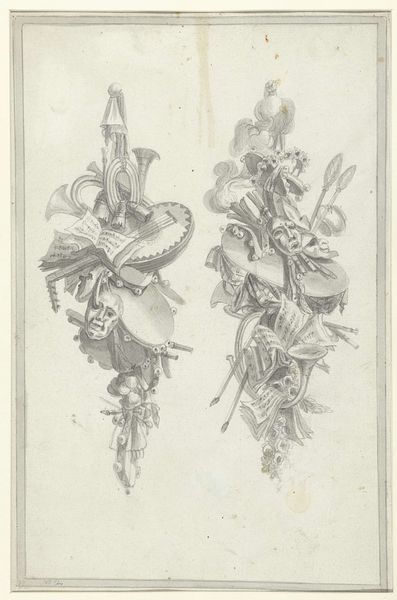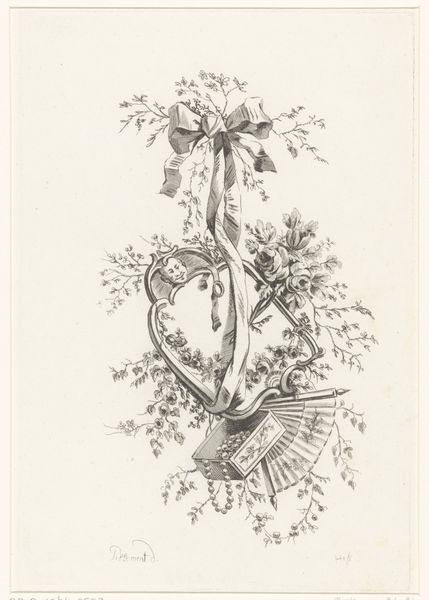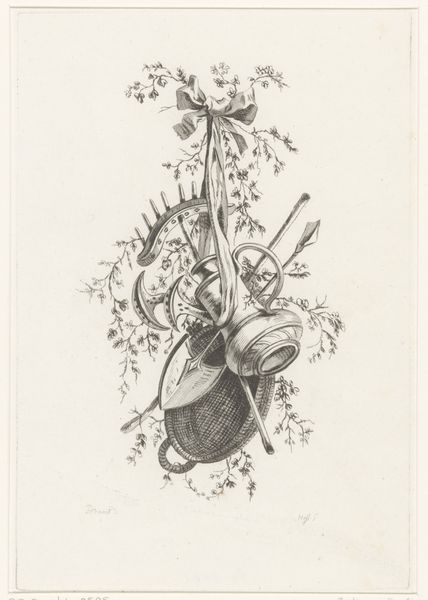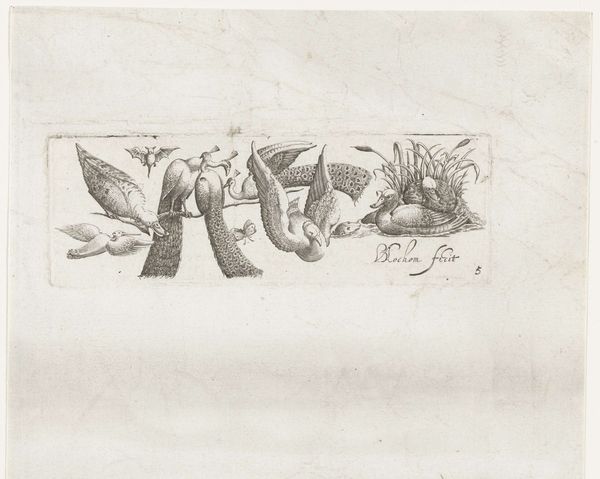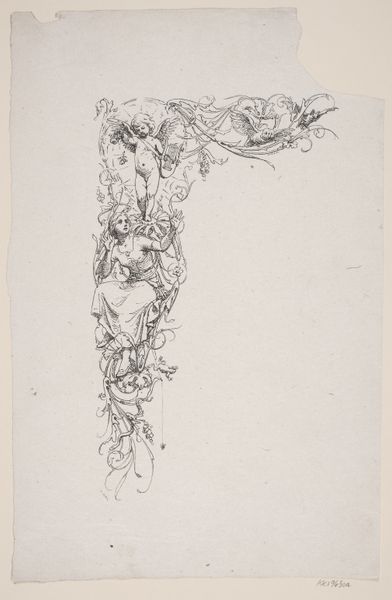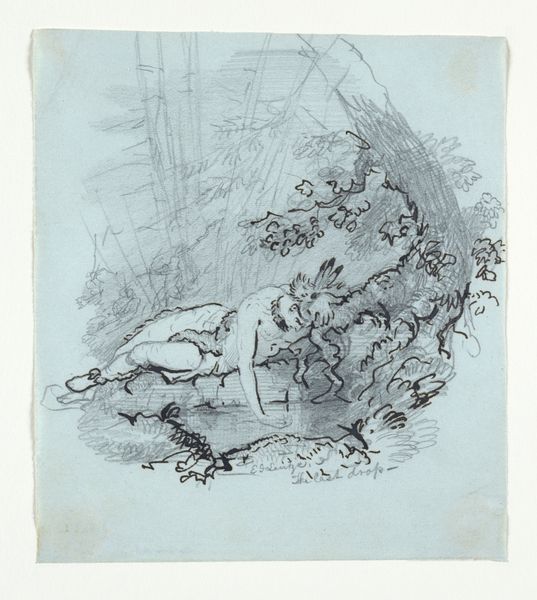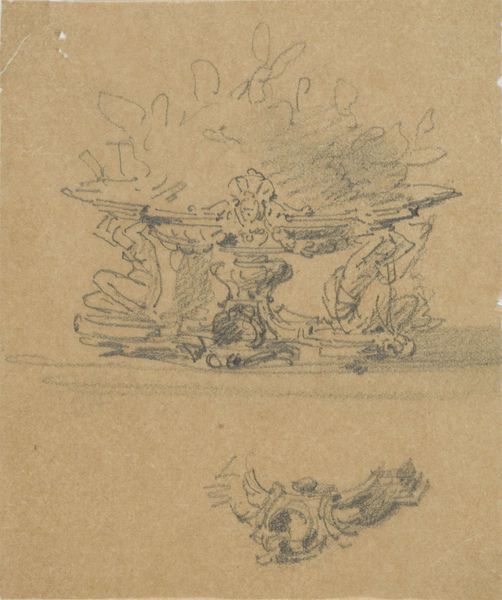
drawing, pencil
#
drawing
#
neoclacissism
#
quirky sketch
#
pen sketch
#
personal sketchbook
#
sketchwork
#
pen-ink sketch
#
pencil
#
pen work
#
sketchbook drawing
#
sketchbook art
#
fantasy sketch
#
initial sketch
Dimensions: height 171 mm, width 238 mm
Copyright: Rijks Museum: Open Domain
Curator: Abraham Meertens created this pencil and pen drawing, "Ornament van muziekinstrumenten," sometime between 1767 and 1823. Editor: My first impression is a delicate chaos. A flurry of meticulously rendered objects piled one atop the other, yet somehow still airy. Curator: Interesting. I see this within the Neoclassical revival sweeping Europe at that time, a fascination with order and idealized forms filtered through a Dutch lens. It evokes the era’s aristocratic patronage of the arts and sciences. Editor: The arrangement feels deliberately balanced, almost symmetrical, if you consider the larger shapes. There is an implied hierarchy between the clearly delineated foreground and the more impressionistic background. Curator: Yes, and consider the context: Dutch society grappling with shifting political powers, moving from republic to monarchy under French influence. These instruments aren't simply decorative; they’re emblems of refinement and civic harmony carefully positioned during societal transitions. Editor: I am also struck by the sheer technical skill. Notice how Meertens uses hatching and cross-hatching to define the volumes and textures. Look at the way he suggests the gleam on metal versus the soft texture of fabric. Curator: Absolutely. While the elite enjoyed luxurious objects such as musical instruments depicted in this work, the era also spurred philosophical thinking. What role did the patronage of arts play in shifting sociopolitical winds, and how does artistic work serve an ideology? Editor: And to think all this complexity is conveyed with just pencil and ink! The tonal range, from the barely-there wisps to the deeply shadowed areas, is exquisite. I see also the expressiveness created from contrasts, such as those between free drawing and structured shapes. Curator: Indeed. Reflecting upon this drawing allows us a glimpse into the intersections of artistic practice, class and politics, during a transformative time. Editor: Agreed, looking closer into the language of the artist’s chosen medium makes us better understand his historical context and the way images worked in Neoclassical artworks.
Comments
No comments
Be the first to comment and join the conversation on the ultimate creative platform.
